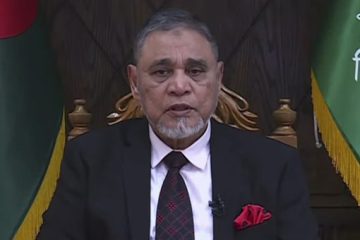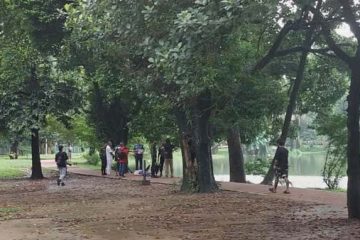Although the government is conducting the Social Safety Net Programmes (SSNPs) in the country aiming to reduce poverty, most of the ‘poorest of the poor’ are not receiving the benefit for lack of proper selection of beneficiaries, according to a recent study. On average, 14.2 percent of non-eligible households are receiving SSNP benefit while 26.4 percent eligible households are denied the facility, it said. During the survey, about 89 percent of respondents believed the poor are receiving the SSNP benefit, but majority of the FGD (focus group discussion) respondents said most of the ‘poorest of the poor’ are denied the facility.
Principal investigator Prof Dr Abul Barkat and co-investigators Prof Dr Subhash Kumar Sengupta, Prof Dr Matiur Rahman, Faisal Mohammad Ahamed and Abdullah Al Hussain of Manob Shakti Unnayan Kendro (MSUK) conducted the study, titled ‘Improving the Targeting Effectiveness of Social Safety Nets in Bangladesh’.
The study was carried out under the National Food Policy Capacity Strengthening Programme (NFPCSP) being implemented by the UN Food and Agriculture Organization (FAO) and the Ministry of Food with financial support from the European Union and USAID.
The survey was conducted in 14 districts from all 7 divisions in Bangladesh with 14 selected upazilas.
Of all the surveyed 3,594 households, 32.6 percent were poor-beneficiary households, 26.4 percent poor non-beneficiary households 14.2 percent non-poor, beneficiary households and 26.8 percent non-poor, non-beneficiary households.
Among the 15,977 individuals surveyed, 2,182 were found to be beneficiaries of 14 different types of safety net programmes. About 20 percent individuals were found eligible, but did not receive any SSNP benefit.
Considering the poverty status of the individual beneficiaries ’ inclusion error’ was calculated. Analysing the field data, it was found that the ‘inclusion error’ was highest in stipend for secondary and higher secondary students with 58.8 per cent, followed by allowance for financially insolvent disabled (42.9 per cent) and
old age allowance (30.5
per cent).
The ‘inclusion error’ was lowest in 100 days ES/EG programme for hardcore poor with 7.4 percent, followed by non-cash Gratuitous Relief (13 percent) and Vulnerable Group Development-VGD (14.6 percent).
The study recommended formulating a database on extreme poor for effective targeting of social safety net programmes and identifying the extreme poor households using poverty indicators.
“To reduce political and personal nepotism, bribery and improper prioritisations, local government representatives involved in selection of beneficiaries should also be under strong supervision. The existing supervision mechanism is less effective. Committees at different levels should be made accountable if targeting errors are found,” the study says.
The government’s spending on social safety net programmes in fiscal 2012-13 was Tk 227,505.5 million, being 11.87 percent of the total budget and 2.18 percent of the GDP.
One of the key challenges of implementing social safety net programmes is targeting of beneficiaries along with coverage issues, leakages, and disparity in regional distribution.
-With The Independent input




















